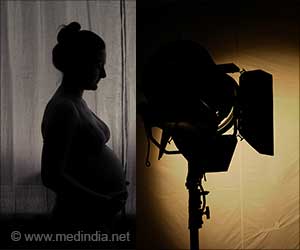Discover how reducing nighttime light exposure can significantly lower your risk of type 2 diabetes. Learn more about this simple preventive measure.
- Study links nighttime light exposure to higher type 2 diabetes risk
- Maintaining a dark environment at night may prevent diabetes
- Simple lifestyle changes can impact diabetes prevention
Personal light exposure patterns and incidence of type 2 diabetes: analysis of 13 million hours of light sensor data and 670,000 person-years of prospective observation
Go to source).
A Simple Strategy to Prevent Type 2 Diabetes
A recent study involving nearly 85,000 men and women in the United Kingdom found that those exposed to minimal light between 12:30 a.m. and 6 a.m. were significantly less likely to develop type 2 diabetes compared to those exposed to higher levels of light during the same period. Dr. Andrew Phillips, senior author and associate professor at Flinders University, stated, "We found that exposure to light at night predicted the likelihood of developing type 2 diabetes. The brighter the light at night, the higher the risk."Nighttime light can disrupt the circadian rhythm, the body’s internal 24-hour clock, which is crucial for regulating blood sugar. The brain’s master clock relies on light cues, and exposure to artificial light can lead to metabolic dysfunction by affecting hormone release.
Participants wore wrist devices that recorded 24-hour light exposure over a week, providing researchers with 13 million hours of light sensor data. Over the next eight years, researchers monitored participants to see how many developed diabetes. The results showed a clear relationship: greater nighttime light exposure correlated with a higher risk of developing type 2 diabetes. People in the top 10% of nighttime light exposure had up to a 67% greater risk than those with the least exposure.
How Nighttime Light Affects Diabetes Risk
"We found that people exposed to very dim light (less than 1 lux; below candlelight) were relatively protected from diabetes. Those exposed to brighter levels had an increased risk, with the risk rising alongside the brightness of the nighttime light," Dr. Phillips noted. Even those exposed to 1 to 6 lux at night had nearly a 30% increased risk. Lux is a measure of light intensity; 1 to 6 lux is akin to twilight in the countryside.The study accounted for various potential confounding factors, including health status, daylight exposure, urban living, and sleep duration. Overnight shift workers, who have an elevated risk of diabetes, were excluded from the study.
The study concluded that "light at night was a robust predictor of type 2 diabetes for both males and females." Limiting nighttime light exposure appeared to reduce the risk, even for those with a genetic predisposition to diabetes.
The Growing Diabetes Crisis
"The findings suggest that reducing nighttime light exposure in our always-lit society could be an effective strategy to lower the prevalence of type 2 diabetes," said Dr. Christian Benedict, an associate professor of neuroscience at Uppsala University, Sweden. He emphasized that while this alone won't counteract an unhealthy lifestyle, it could be a significant step toward better health and diabetes prevention.Dr. Benedict coauthored a commentary calling for research into nocturnal light mitigation strategies such as sleep masks and blue light-blocking glasses. Dr. Dale P. Sandler, chief of epidemiology at the National Institute of Environmental Health Sciences, affirmed the study's findings, noting that they extend her previous research linking light exposure at night to poor metabolic health outcomes like obesity and diabetes.
The global public health crisis of type 2 diabetes continues to escalate. Projections suggest that as many as 1.3 billion people worldwide could be living with diabetes by 2050, up from 529 million in 2021. While avoiding light at night is unlikely to replace diet and exercise as primary diabetes prevention strategies, it "may hold some public health promise as an easily implementable strategy," wrote Dr. Benedict.
Practical Tips for Better Sleep and Health
Poor sleep quality or duration, influenced by nighttime light exposure, is linked to various health issues, including depression, heart disease, and cognitive decline. Greater nighttime light exposure is also associated with psychiatric disorders.Experts recommend avoiding bright lights and screens before bedtime and overnight. Regular exercise and a consistent sleep schedule can also help reset circadian rhythms. "Our findings suggest that reducing light exposure at night and maintaining a dark environment may be an easy and cheap way to prevent or delay the development of diabetes," Dr. Phillips concluded.
Reference:
- Personal light exposure patterns and incidence of type 2 diabetes: analysis of 13 million hours of light sensor data and 670,000 person-years of prospective observation - (https://www.thelancet.com/journals/lanepe/article/PIIS2666-7762(24)00110-8/fulltext)
Source-Medindia
















